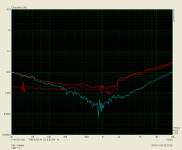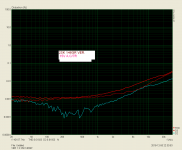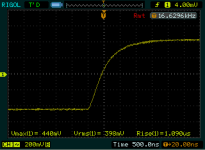A dual fet 2SK146GR as input fet.
Nice balance.
I think that an offset controlling trimmer is no more necessary.
Looks very good. Thanks a lot!
Sons of Vhex ver.1.2 2sk146GR
Another surprice.
Picture 1 version with unmatched 2sk117
Picture 2 version with dual fet
Another surprice.
Picture 1 version with unmatched 2sk117
Picture 2 version with dual fet
Attachments
Last edited:
Onother surprice.
Picture 1 version with unmatched 2sk117
Picture 2 version with dual fet
Better overall DC balance leads to lower distortion, especially below 1KHz.
Interesting result 🙂 One more proof that matching really makes sense, especially in the input LTP.
The other interesting find is that matching input fet ONLY is enough for 0V d.c offset IN THE MIDDLE OF TRIMMER.Better overall DC balance leads to lower distortion, especially below 1KHz.
Interesting result 🙂 One more proof that matching really makes sense, especially in the input LTP.
I've been doing a quick match with a cheap meter for all the VHex input transistors. I rarely need to adjust DC offset at all. They all seem to run nicely within 3mV.
i'm guessing the 2sk146 having a lot more transconductance at the operating current probably helps the distortion too.
Folded cascode is helping mitigate distortion increase as frequency increases, in spite of much larger capacitance of 2sk146. It's a large geometry part, famous for large gain, very low noise and high cost, when you can even find them.
🙂
mlloyd1
Folded cascode is helping mitigate distortion increase as frequency increases, in spite of much larger capacitance of 2sk146. It's a large geometry part, famous for large gain, very low noise and high cost, when you can even find them.
🙂
mlloyd1
The other interesting find is that matching input fet ONLY is enough for 0V d.c offset IN THE MIDDLE OF TRIMMER.
Yes - this is cool.
It's a pity that many good pairs are not manufactured any more.
2SK389 for example.
Sons of Vhex ver.1.2 2sk146GR
Scope test
Scope test
Attachments
-
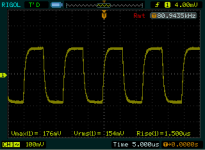 80K.PNG15.2 KB · Views: 153
80K.PNG15.2 KB · Views: 153 -
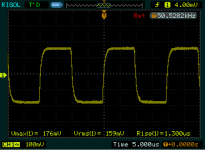 50K.PNG13.8 KB · Views: 154
50K.PNG13.8 KB · Views: 154 -
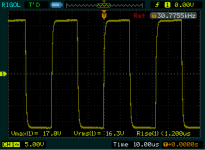 30K 16V.PNG16.5 KB · Views: 145
30K 16V.PNG16.5 KB · Views: 145 -
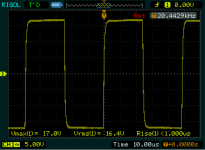 20K 16V.PNG16 KB · Views: 148
20K 16V.PNG16 KB · Views: 148 -
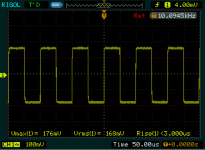 10K SQ.PNG14.1 KB · Views: 129
10K SQ.PNG14.1 KB · Views: 129 -
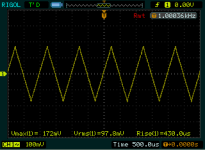 1K TR.PNG14.7 KB · Views: 354
1K TR.PNG14.7 KB · Views: 354 -
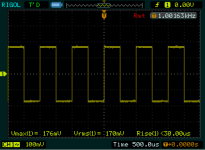 1K SQ.PNG13 KB · Views: 368
1K SQ.PNG13 KB · Views: 368 -
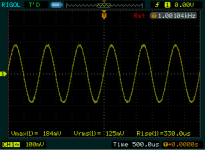 1K.PNG15.5 KB · Views: 370
1K.PNG15.5 KB · Views: 370 -
 20K CLIP.PNG14.4 KB · Views: 160
20K CLIP.PNG14.4 KB · Views: 160 -
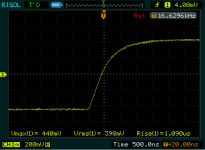 RISE TIME.PNG12.5 KB · Views: 155
RISE TIME.PNG12.5 KB · Views: 155
Scope test
Wow )) Better than my simulations 😀
Fast enough. Clipping is excellent

Do you mean ARTA STEPS at the higher amplitudes,or the rise time measurements at a higher level?It's better to see the step response at the higher amplitudes.
It will show some 40-50V/uS.
Last edited:
Do you mean ARTA STEPS at the higher amplitudes,or the rise time measurements at a higher level?
I actually mean this kind of picture for the rise/fall time. If you can see it at higher amplitude - like 50Vpp or so - you will get more precise measurement.
Look at your 20KHz square wave - it makes around 35V in less than 1uS.
Attachments
Do you not think the lsk389 is not equivalent? and now they offer dual p channel lsj689 to go along with lsk489, expensive but available.It's a pity that many good pairs are not manufactured any more.
2SK389 for example
Bob Cordell did a talk, (utube video avail) at Burning Amp on his app using a symetrical push pull IPS & VAS... lateral mos ops, so many designs, joining Terry's club 🙂
Do you not think the lsk389 is not equivalent? and now they offer dual p channel lsj689 to go along with lsk489, expensive but available.
Bob Cordell did a talk, (utube video avail) at Burning Amp on his app using a symetrical push pull IPS & VAS... lateral mos ops, so many designs, joining Terry's club 🙂
Ah! You're right - I should try these ones.
So far we're using 2SK246/2SJ103 for symmetric IPS, but they are also getting hard find.
Ok.this will be a job for tomorrow🙂I actually mean this kind of picture for the rise/fall time. If you can see it at higher amplitude - like 50Vpp or so - you will get more precise measurement.
Look at your 20KHz square wave - it makes around 35V in less than 1uS.
Sons of Vhex ver.1.2 2sk146GR
Today Sons tested using capacitance multiplier for input and vas stage but i can't see any further improvement.
Today Sons tested using capacitance multiplier for input and vas stage but i can't see any further improvement.
PSRR is good enough
It's like trying to zip a jpeg - it doesn't compress any more 😛

Terry,look these pictures.I see you post these graphs a lot. May I ask what you see in these and how they help you determine whether or not an amp is working well or not? What are you looking for when you look at them?
Thanks, Terry
It is from a commercial amplifier to be compared with the sons of vhex
Attachments
-
 DETAILS sons.PNG19.4 KB · Views: 420
DETAILS sons.PNG19.4 KB · Views: 420 -
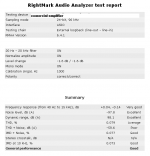 details.PNG20 KB · Views: 416
details.PNG20 KB · Views: 416 -
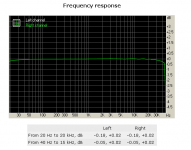 Frequency response sons.PNG17.8 KB · Views: 412
Frequency response sons.PNG17.8 KB · Views: 412 -
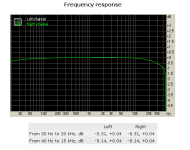 Frecuency response.PNG18.1 KB · Views: 408
Frecuency response.PNG18.1 KB · Views: 408 -
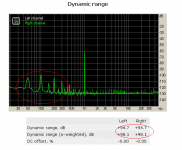 Dynamic range.PNG24 KB · Views: 129
Dynamic range.PNG24 KB · Views: 129 -
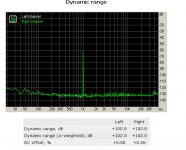 Dynamic range sons.PNG21.9 KB · Views: 132
Dynamic range sons.PNG21.9 KB · Views: 132 -
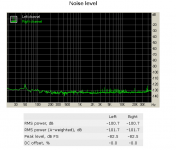 Noise level sons.PNG22.9 KB · Views: 140
Noise level sons.PNG22.9 KB · Views: 140 -
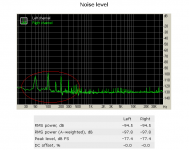 Noise level.PNG25 KB · Views: 126
Noise level.PNG25 KB · Views: 126 -
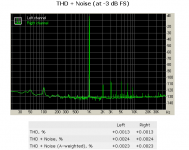 THD+Noise at-3db sons.PNG21.6 KB · Views: 146
THD+Noise at-3db sons.PNG21.6 KB · Views: 146 -
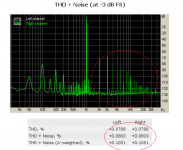 THD.PNG25.4 KB · Views: 138
THD.PNG25.4 KB · Views: 138
Last edited:
- Home
- Amplifiers
- Solid State
- Sons of VHex

